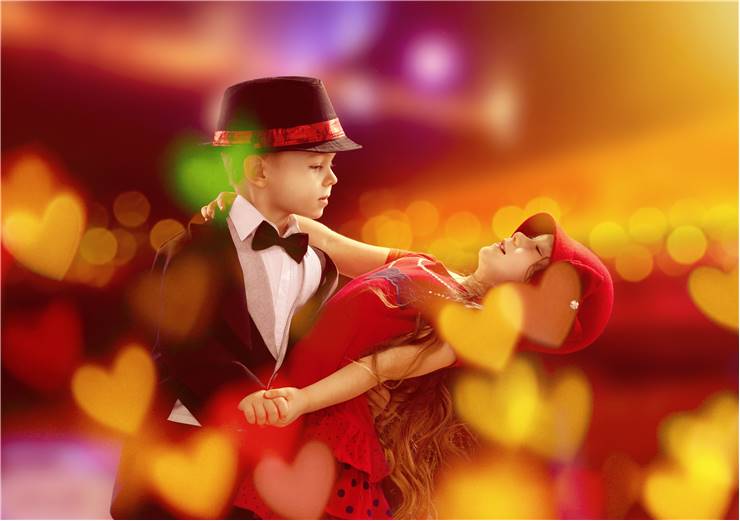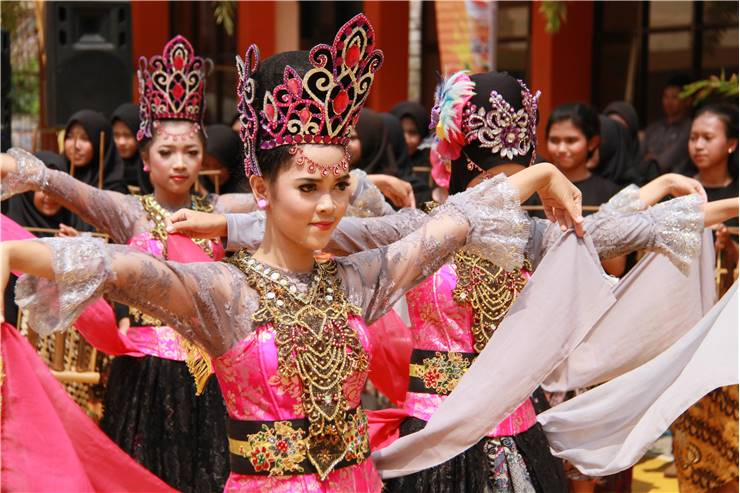Dance Facts - History, Interesting Tips and Types of Dance
Dance is a form of art made by purposefully recreating selected sequences of human motion, which can be imbued with the values of aesthetics and symbolism acknowledged by performers and observers from within the particular culture. The dance itself can be freeform or have a predefined choreography that may or may not align with traditions of origin or historical period.
The dance can be performed to serve various functions (social, competitive, ceremonial, martial, erotic…). Still, it also has two distinct forms – theatrical dance in which dancers perform for an audience, and participatory social dance where dancing in a group is encouraged by anyone. Participatory dances are most commonly performed at weddings, social gatherings, and festivals. They can be enjoyed with folk music alone or in groups (pairs, lines, chains, or other forms).
Theatrical dance is known for having more elaborate choreography, planning, costume, scenery and other elements that make the entire production feel more professional. The performers of theatrical dance are usually professional “ virtuoso dancers” who practice their craft over the years. They are often tasked to interpret the musical accompaniment with advanced dance moves or routines.
Origins and Early History
The dance has always been with us, even before the arrival of written language and modern history when our earliest cultures evolved utilizing oral and performance methods to pass the stories from one generation to the next. Many historians believe that social, celebratory, and ritual dances are essential factors in the development of early human civilizations.
The earliest findings have pinpointed the origins of ancient dances in 9000-year-old India or 5300-year-old Egypt. Still, the records of more common infusion of dance into modern culture can be found in Ancient Greece, China, and India. All these old dances evolved, eventually morphing into various Roman and European medieval, traditional Chinese, Hindi, and other traditional dances, respectively.
After the arrival of the European Renaissance, the history of music and dance exploded with new additions to song and dance. Ease of travel and immigration to the new world brought these dances into the mix with many native cultures of the New World, forging countless new dance types that are still popular today.
Do you know these facts about dance?
- First archeological proof of dance comes from the 9 thousand-year-old cave paintings in India.
- One of the earliest uses of structured dance was introduced in religious ceremonies that told the stories of ancient myths and gods. Egyptian priests used this kind of visual storytelling in their rituals.
- Ancient Egyptians used dancing for both entertainment and religion.
- Dance represented important parts of many Greek and Roman religious ceremonies.
- Ancient Greeks and Romans annually celebrated their wine gods Dionysus and Bacchus with several days long festivities filled with alcohol, song , and dance.
- History of European medieval dance is fragmented and limited, but it is believed that simple folk dances were widespread among common and wealthy classes.
- Modern dance history in Europe started with Renaissance, when many new dances were invented. After that, periods of Baroque, post-French Revolution, the Elizabethan era, World War 1, Prohibition, Ragtime, and pre-WW2 brought many new dance styles.
- Waltz, one of the most popular dances today, came into popularity in the mid-19th century through the efforts of the famous composer Johann Strauss, but its origins can be traced even to the distant 16th century.
- At first, the waltz was performed at arm's length between male and female dances. The shocking transition to the close embrace happened only after English Queen Victoria fell in love with the dance and forced this change.
- Around 30 thousand people are employed in the UK dance industry today, maintaining around 200 dance companies.
- Even people in wheelchairs can dance! Such dancing is very popular in Europe, where there are even competitions in Latin dances with special wheelchair choreographies.
- Professional dance is today regarded as one of the most demanding physical abilities and sports. According to studies, 80% of all professional dances have at least one major injury during their career, and a staggering 93% of all dance teachers were forced into that position after career-ending injury.
- High amount of injuries in professional dancing is induced by high levels of fatigue, little time for rest, inadequate healing techniques, and high-stress levels. All those factors can produce burnout periods when dancers have decreased strength, coordination, and cognitive and immune functions.
- Lion Dance is one of the most popular religious and ceremonious dances in China and the surrounding countries of Taiwan, Korea, and Japan. This dance can signify bringing of good fortune, ward off evil spirits, and be an excellent showcase in martial arts proficiency.

Facts about Dance
After several thousand years, dancing managed to completely infuse itself into our way of life. Here you can find more information about this fascinating activity and the impact it can have on our lives.
History of Dance
Since the dawn of human civilization, dance remained in close connection with us. Here you can find out more about this fascinating part of our culture, all from its roots in ancient civilizations to the modern times.
Types of Dance
Thousand years of innovations and evolution created modern dance that we all enjoy today. Here you can find out more about specific dance styles and the way they are implemented and created.
Dance List
There are many specific dances which can be sorted into single dance styles or families of related dances. Here you can read more about specific dances and variants of a specific dance.

Facts about Dancing
- Professional dances are today regarded as athletes.
- Dancing is very beneficial to your health. It lowers the chances of heart and blood vessel diseases, improves posture and weight, reduces stress and tension, improves brain function because of the constant presence of music, and can improve the relationship between dance partners.
- Because of the need to maintain a strict head position while dancing, doctors often prescribe the use of dance for those patients that need to develop their peripheral vision.
- First balled dancer that used pointe shoes was Marie Taglioni in 1832 ballet "La Sylphide".
- One tutu shoe costs up to $2000 dollars to be made, and one ballerina wears between 2 and three pairs per week.
- Because of the high physical demand on their bodies, most professional dancers retire from dancing during their mid-30s.
- Famous modern dance Cha-Cha originated from Cuba.
- Famous energetic ballroom dance can-can (or cancan), performed by a row of female dances in long skirts, originated from 1830s Paris ballrooms.
- The origin of tap-dancing comes from the tribal dances of enslaved Africans. Their arrival in North America introduced that dance to western audiences.
- Dancing with metal tap shoes became popular in United States during 1920s and 1930s. One of the most famous tap-dancing performers of that time were Nicholas brothers, who were instrumental in bringing that dance style into Hollywood movies.
- Famous movie stars such as Fred Astaire, Ray Bolger, and Gene Kelley used tap dancing to enchant the minds of the worldwide audience with great success.
- Hindu religion closely relates to dance and music. This connection can most visibly be seen in the countless Bollywood movies that all celebrate dancing.
- One of the dances that changed the landscape of dance history completely is polka! This energetic dance focused on young women who liked to jump, hop and turn swept across the world in the mid-19th century.
- Dancing represent great physical exercise for people of all age. It can be safely practiced from the age of 2 to 102!
- Many historical waves of dance were perceived as the "destructors" of the old way of dance. Examples of that can be found in the 1920s Charleston and the era of Rock music.
- First ballroom dance that was ever created is Italian Viennese Waltz.
- One reason that ballroom dancing is starting to become popular is the famous TV competition show "Dancing with the Stars".
- Enslaved Africans that were brought to Brazil 300-400 years ago were prohibited from practicing martial arts. Therefore, they developed the mix of dancing and fighting known today as capoeira.
- Breakdancing was first created as a "less lethal" form of fighting between warring African-American street gangs in the 1970s Bronx area of New York City. This form of dancing re-emerged in worldwide popularity during the 1990s.
- Dance marathon competition started as early as 14th century England. They reached the height of their popularity in the bloom of US entertainment expansion during the 1930s depression era. Some competitions were performed in the 22-day-long marathons.
- The most sensual dance of modern times is without a doubt a Tango. It originated in 1890s Argentina but quickly became very successful in Europe.

